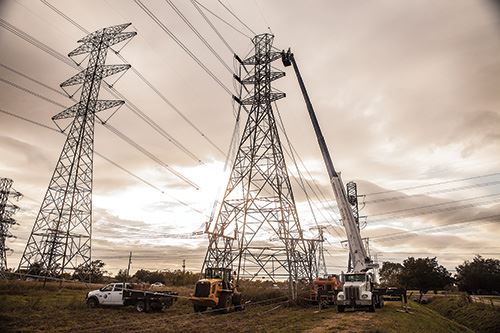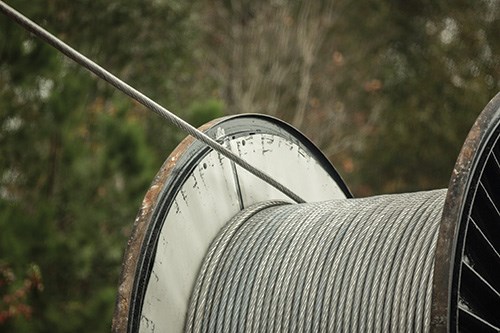Carbon fiber featured in new electrical transmission cable
Celanese Corp. (Dallas, Texas) and Southwire Co. LLC (Carrollton, Ga.), North America’s largest wire and cable producer, have introduced a new option for utility transmission lines: the C7 Overhead Conductor, featuring a lightweight and high strength-to-weight, multi-element composite core of Celstran continuous fiber-reinforced thermoplastic rods (CFR-TPR), made by Celanese.
Celanese Corp. (Dallas, Texas) and Southwire Co. LLC (Carrollton, Ga.), North America’s largest wire and cable producer, have introduced a new option for utility transmission lines: the C7 Overhead Conductor, featuring a lightweight and high strength-to-weight, multi-element composite core of Celstran continuous fiber-reinforced thermoplastic rods (CFR-TPR), made by Celanese.
Mark Lancaster, Southwire’s director of overhead transmission engineering, says the technology behind C7 was seven years in the making and represents a step-change in overhead wire and cable design and engineering. The goal, he says, was to develop a product for utilities that want to increase right-of-way capacity without the expense of erecting new infrastructure. Line sag, he says, is the largest limiting factor in how much current can be passed through a utility line. “We wanted to increase capacity of the right of way over the same equipment.” The result is a product that, reportedly, not only increases capacity, but provides cost-avoidance benefits by obviating the need for new towers and poles, a need that would have to be met if increases were attempted with traditional steel-cored conductor cables.
Codeveloped by Celanese and Southwire, the conductor cable reportedly nearly doubles transmission capacity, yet exhibits less sag than an aluminum conductor steel-reinforced (ACSR) cable of the same diameter. How does C7 compare to other composite-cored conductors already on the market? Michael Ruby, global composites business manager at Celanese, says, “This combination of materials provides distinct advantages compared to alternative High Temperature Low Sag (HTLS) technology and conventional conductors.”
For one, the C7 core comprises seven (or more, depending on cable diameter) 3.2-mm/0.13-inch diameter strands of aerospace-grade carbon fiber pultruded with Fortron PPS (polyphenylene sulfide) from Celanese. The core is isolated from direct contact with the cable’s aluminum conductor strands by an overwrap of polyetheretherketone (PEEK), which protects the aluminum from galvanic corrosion and prevents abrasion of the core.
Unlike previously introduced solid, composite-cored cabling, the Celstran CFR-TPR core’s construction is said to eliminate the potential for single-point failure of the C7 cable: The bundled core strands and the overwrapped aluminum conductor strands, together, provide structural support redundancy in high-load conditions, which means that the failure of one or two or even three strands will not result in cable failure. In addition, Lancaster notes that the carbon fiber composite core operates at a generally lower temperature, which maximizes energy throughput and minimizes capacity loss. Nonetheless, the carbon fiber/thermoplastic core reportedly can operate under hotter conditions (180°C to 225°C/356°F to 437°F) without damage to the line.
That said, Lancaster points out that the success of C7 as a replacement cable product rides on whether or not cable installers can use the same tools and equipment they employ with metal-cored cables. On that subject, C7 delivers. “Install and repair strategies had to be the same,” he says, “so that our customers can seamlessly integrate it into their work environment.”
Related Content
-
Drag-based wind turbine design for higher energy capture
Claiming significantly higher power generation capacity than traditional blades, Xenecore aims to scale up its current monocoque, fan-shaped wind blades, made via compression molded carbon fiber/epoxy with I-beam ribs and microsphere structural foam.
-
Composites end markets: Batteries and fuel cells (2024)
As the number of battery and fuel cell electric vehicles (EVs) grows, so do the opportunities for composites in battery enclosures and components for fuel cells.
-
NCC reaches milestone in composite cryogenic hydrogen program
The National Composites Centre is testing composite cryogenic storage tank demonstrators with increasing complexity, to support U.K. transition to the hydrogen economy.
















.jpg;maxWidth=300;quality=90)

